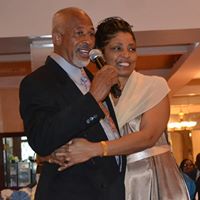Jon Michael Arnett
age ~50
from Beaverton, OR
- Also known as:
-
- Jon M Arnett
- John M Arnett
- Jon N Starnes
Jon Arnett Phones & Addresses
- Beaverton, OR
- 853 NE 100Th St, Seattle, WA 98125 • 4155186858
- 3014 22Nd Ave W, Seattle, WA 98199
- San Francisco, CA
- Corvallis, OR
- 4034 Potomac St, Saint Louis, MO 63116 • 3146642507
- Portland, OR
- Tacoma, WA
- 853 NE 100Th St, Seattle, WA 98125
Name / Title
Company / Classification
Phones & Addresses
Secretary
Retired N.F.L. Players Congress
200 Greenridge Dr, West Linn, OR 97035
4153 Issaquah Pne, Redmond, WA 98075
600 Langtry Dr, Las Vegas, NV 89107
4894 Hunt Rd, Cincinnati, OH 45242
4153 Issaquah Pne, Redmond, WA 98075
600 Langtry Dr, Las Vegas, NV 89107
4894 Hunt Rd, Cincinnati, OH 45242
M
Oceanfresh Seafoods Investment, LLC
2600 Walnut Ave, Tustin, CA 92780
200 Greenridge Dr, West Linn, OR 97035
200 Greenridge Dr, West Linn, OR 97035
Us Patents
-
Hybrid Telecommunications Network Connection Indicator
view source -
US Patent:20150271317, Sep 24, 2015
-
Filed:Mar 19, 2014
-
Appl. No.:14/220071
-
Inventors:- REDMOND WA, US
Jeffrey C. Fong - Seattle WA, US
Aaron Woodman - Seattle WA, US
Christopher Raykovich - Seattle WA, US
Jon Arnett - Seattle WA, US
Eric Hull - Seattle WA, US
Gregory Howard - Kirkland WA, US
John Skovron - Bellevue WA, US
Stephen Speicher - Redmond WA, US -
International Classification:H04M 1/725
G06F 3/0481 -
Abstract:A mobile device having capabilities to access connections to cellular and Wi-Fi portions of a hybrid telecommunications network is configured to display a variety of different icons that graphically indicate a current connection status for both data usage and voice calling on a graphical user interface (GUI). A user can put the GUI into an expanded state to show additional information about the connection status including textual descriptions of icons to instruct the user as to the specific meaning of a given icon. The textual descriptions enable an association between the iconography and the connection state to be established for the user. The icons can then quickly and effectively convey connection state to the user in a comprehensive manner while efficiently using the available display space on the device.
-
Intelligent User Interfaces For Multiple Sim Cards
view source -
US Patent:20150018040, Jan 15, 2015
-
Filed:Jul 15, 2013
-
Appl. No.:13/942621
-
Inventors:Tony He - Kirkland WA, US
Susan Chory - Seattle WA, US
Gregory Howard - Kirkland WA, US
Peter Bergler - Duvall WA, US
Lijuan Qin - Redmond WA, US
Jon Arnett - Seattle WA, US
Janis Jungeun Lee - Kirkland WA, US -
International Classification:H04M 1/725
H04B 1/38 -
US Classification:455558
-
Abstract:Various user interfaces and other technologies for interacting with devices that support multiple SIM cards can be implemented. For example, SIM-separated and SIM-aggregated user interface paradigms can be supported. Intelligent selection of an appropriate paradigm can support user preferences, conversation user interfaces, and the like. Other features such as SIM card defaults can help users deal with multiple SIM card scenarios. A consistent, compact user interface for switching SIM cards can be supported. Users can interact with their devices more efficiently and with less frustration. A wide variety of use scenarios are supported.
Resumes

Experience Design Director, Nxt Digital, Nike
view sourceLocation:
Seattle, WA
Industry:
Design
Work:
Microsoft since Apr 2010
Senior UX Design Lead, Windows Phone Mobile Studio
arnett design since Jan 1998
Art Direction, Design & Consulting
frog design 2008 - Apr 2010
Senior Digital Designer
Method, Inc. Apr 2005 - Jul 2008
Art Director
Toky Branding + Design Apr 2003 - Mar 2005
Senior Designer
Senior UX Design Lead, Windows Phone Mobile Studio
arnett design since Jan 1998
Art Direction, Design & Consulting
frog design 2008 - Apr 2010
Senior Digital Designer
Method, Inc. Apr 2005 - Jul 2008
Art Director
Toky Branding + Design Apr 2003 - Mar 2005
Senior Designer
Education:
University of Oregon 1993 - 1997
BA, Fine and Applied Arts, Emphasis in Visual Communication
BA, Fine and Applied Arts, Emphasis in Visual Communication
Skills:
Interaction Design
Graphic Design
Information Architecture
Art Direction
User Interface
User Experience
Mobile Design
Experience Design
Scope Management
User Interface Design
Creative Direction
Web Design
User Centered Design
Typography
Information Design
Corporate Identity
Logo Design
Brand Development
Adobe Creative Suite
Print
Packaging
Creative Writing
Visual Identity
Project Management
Management
Mentoring
Team Leadership
Visual Communication
Graphics
Mobile Devices
User Experience Design
Mobile Applications
Visual Design
Design Strategy
Vui Design
Multimodal Ux Design
Nui Design
Advertising
Branding
Wireframing
Usability Testing
Adobe Photoshop
Sketch
User Interface Prototyping
Voice User Interface Design
Vui
Multimodal Interface Design
Interactive Kiosks
Mobile Application Design
Interactive Tv
Product Design
Ux Design Sprints
Sketch App
Ux Research
User Flows
User Journeys
Tv Interface Design
Mobile Interface Design
Site Maps
User Experience
Agile and Waterfall Methodologies
Graphic Design
Information Architecture
Art Direction
User Interface
User Experience
Mobile Design
Experience Design
Scope Management
User Interface Design
Creative Direction
Web Design
User Centered Design
Typography
Information Design
Corporate Identity
Logo Design
Brand Development
Adobe Creative Suite
Packaging
Creative Writing
Visual Identity
Project Management
Management
Mentoring
Team Leadership
Visual Communication
Graphics
Mobile Devices
User Experience Design
Mobile Applications
Visual Design
Design Strategy
Vui Design
Multimodal Ux Design
Nui Design
Advertising
Branding
Wireframing
Usability Testing
Adobe Photoshop
Sketch
User Interface Prototyping
Voice User Interface Design
Vui
Multimodal Interface Design
Interactive Kiosks
Mobile Application Design
Interactive Tv
Product Design
Ux Design Sprints
Sketch App
Ux Research
User Flows
User Journeys
Tv Interface Design
Mobile Interface Design
Site Maps
User Experience
Agile and Waterfall Methodologies

Jon Arnett
view source
Jon Arnett
view sourceLocation:
United States

John Arnett Cagalingan
view source
John W Arnett
view source
Jon Arnett
view source
John Arnett Sr
view source
Jon Arnett
view source
Jon Arnett
view source
Jon Arnett
view source
Jon Arnett
view sourceNews

183 Senior player nominees announced for Pro Football Hall of Fame Class of 2025
view source- Alan Ameche, Ottis Anderson, Jon Arnett, Larry Brown, Timmy Brown, Earnest Byner, Roger Craig, John David Crow, Clem Daniels, Hewritt Dixon, Chuck Foreman, Willie Galimore, Pat Harder, Marv Hubbard, Cecil Isbell, Daryl Johnston, Verne Lewellen, Christian Okoye, Bill Osmanski, Glenn Presnell, Mark va
- Date: Sep 10, 2024
- Category: Sports
- Source: Google
Classmates

Jon Arnett
view sourceSchools:
Morenci High School Morenci MI 1992-1996, Blissfield High School Blissfield MI 1996-2004

Jon Arnett
view sourceSchools:
Lower Moreland High School Huntingdon Valley PA 1975-1979
Community:
Anita Knockers, Mark Evans

Jon Arnett
view sourceSchools:
Canal Winchester High School Canal Winchester OH 2002-2006
Community:
David Bursik, Tommie Wehner, Carla Bunting, Vernon Pierce

Jon Arnett, San Rafael Hi...
view source
Santa Venetia Middle Scho...
view sourceGraduates:
Jon Arnett (1978-1979),
Greg de Martini (1976-1980),
Richard Cruise (1979-1982)
Greg de Martini (1976-1980),
Richard Cruise (1979-1982)

Morenci High School, More...
view sourceGraduates:
Jon Arnett (1992-1996),
Sarah Wickham (1991-1995),
Kym Tedder (1995-1999),
Lyle Wonders (1971-1975),
Michelle Beckmon (2002-2006)
Sarah Wickham (1991-1995),
Kym Tedder (1995-1999),
Lyle Wonders (1971-1975),
Michelle Beckmon (2002-2006)

Laporte City Union High S...
view sourceGraduates:
Amy Neith (1992-1996),
Deb Alden (1974-1978),
Doug Weltzin (1970-1974),
David Oberhauser (1988-1992),
James Peachee (1970-1974),
John Arnett (1952-1956)
Deb Alden (1974-1978),
Doug Weltzin (1970-1974),
David Oberhauser (1988-1992),
James Peachee (1970-1974),
John Arnett (1952-1956)

University of Chattanooga...
view sourceGraduates:
Jon Arnett (1998-2003),
Rachel Carter (2000-2004),
Susan Ausley (1972-1976),
Robert Wetzel (1998-2001)
Rachel Carter (2000-2004),
Susan Ausley (1972-1976),
Robert Wetzel (1998-2001)
Myspace
Youtube
Googleplus

Jon Arnett
Work:
Microsoft - Senior UX Design Lead (3)
Education:
University of Oregon - Fine and Applied Arts

Jon Arnett
Work:
CSTW (OSU Writing Center) - Web Developer (2012-2013)

Jon Arnett

Jon Arnett

Jon Arnett

Jon Arnett

Jon Arnett

Jon Arnett
Flickr
Get Report for Jon Michael Arnett from Beaverton, OR, age ~50



















